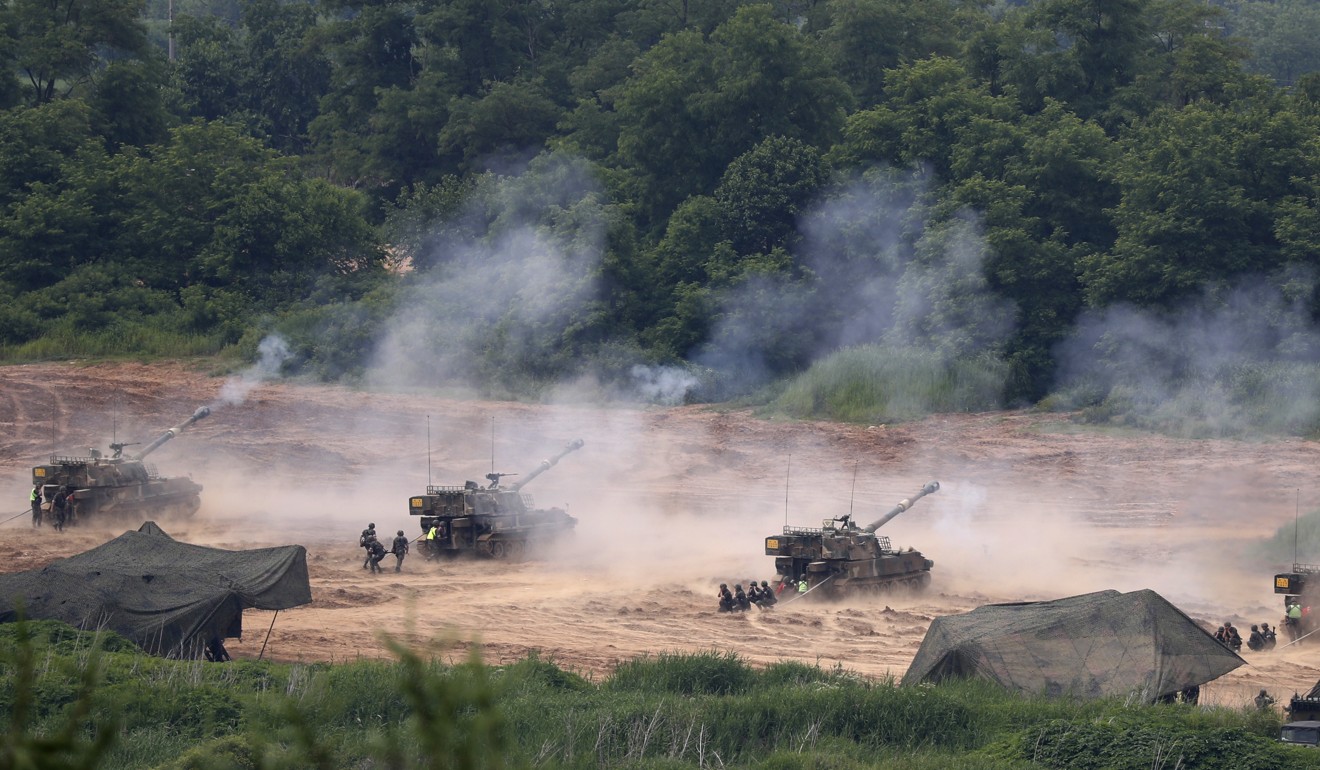
Korean summit: intentions of Moon and Kim need US input to become reality
Plans for economic development cannot happen under present sanctions, and first require Washington to obtain guarantees on denuclearisation
As expected, the third meeting between Moon Jae-in and Kim Jong-un produced a highly ambiguous statement.
No timeline for a declaration of Pyongyang’s nuclear arsenal and no framework for nuclear dismantlement arose.
Yet optimists may disagree. The joint military declaration agreed to a cease of military exercises “aimed at each other along the Military Demarcation Line”, and the withdrawal of guard posts along the Demilitarised Zone. Pyongyang pledged to close its nuclear test facility at Tongchang-ri, as part of the two Koreas “pushing forward the complete denuclearisation of the Korean peninsula”, and inter-Korean economic cooperation projects were proposed.
The summit demonstrated the rapprochement between North and South: Kim affirmed how the summit statement would “open a higher level for the improvement in relations” between the two Koreas. Moon deemed the summit the first occasion on which steps towards denuclearisation were openly discussed.
But Pyongyang’s openness to outside observers for the closing of the nuclear test facility at Tongchang-ri does not mean its commitment to denuclearisation is firm. It has reneged in the past.
The 2005 six-party talks statement, signed by Kim Jong-il, stated how North Korea “committed to abandoning all nuclear weapons and existing nuclear programmes”.
Only one year later, the first nuclear test took place. Indeed, back in 2005, the North had not declared itself a fully-fledged nuclear power. What will happen in 2018?
In Donald Trump’s words, this third summit was “very exciting”, but the ball remains in Washington’s court. Afterwards, Pyongyang accused the US of interference, “scheming to put the brakes on nicely developing North-South relations”.
Fraying the Washington-Seoul alliance has been one long-standing diplomatic objective of Pyongyang. What better timing for doing so, with talks between US Secretary of State Mike Pompeo – whose previous trips to Pyongyang have brought little success – and North Korea’s Foreign Minister Ri Yong-ho set to take place at the UN General Assembly.

In his most recent meeting with President Trump, Moon stressed that although “North Korea’s decision to relinquish its nuclear programme has been officialised to a degree that not even those within North Korea can reverse”, Mr Trump remains “the only person who can solve this problem”.
Addressing the UN, the South Korean president emphasised that the “urgent task” is a Korean end-of-war declaration, and urged the international community to respond to North Korea’s “new choices”, including Kim Jong-un’s “commit[ment] to denuclearisation”. Yet has Kim actually committed? A second Trump-Kim summit beckons.
Fulfilling Moon’s desires, the two Koreas agreed to “boost exchanges and cooperation”, including plans to reopen the Kaesong Industrial Complex – closed by former president Park Geun-hye in 2016 – and the Mount Kumgang Tourist Resort, together with a pledge for a joint Korean bid to host the 2032 Olympic Games.
Surely such plans would delight China, which hailed the Moon-Kim summit as epitomising a “new and common ground” between the two Koreas?
Complications remain with Moon’s economic plans. Sending chairmen of Korean chaebol such as Samsung and LG, as well as the Korea Development Bank, to Pyongyang to scope the field of potential inter-Korean economic projects – such as developing infrastructure for natural resources – is a very long-term project. Economic development must be a reward for denuclearisation.
A strategy of economic development before denuclearisation risks Pyongyang’s nuclear arsenal remaining unchanged in the flurry of rhetoric on denuclearisation.
Kim’s focus on economic development shows his attention to the second part of his byungjin policy. The first part – nuclear development – has been deemed completed by Pyongyang.
Yet substantive inter-Korean economic projects cannot take place under current sanctions. UN Security Council sanctions ban the trade of military equipment, transport vehicles and natural gas imports, among others.
US executive order 13722, signed during Barack Obama’s presidency in March 2016, specifically prohibits any new investment in North Korea. Seoul’s May 24 measures of 2011 – which banned all North-South trade – must not be forgotten.
These measures could be overturned, but Seoul, in signing up to the UN sanctions, must maintain its commitment to them – no easy endeavour. Moon’s announcement that North Korea wishes to join international organisations such as the World Bank and International Monetary Fund, stating how Kim may be willing to trade nuclear weapons for economic development, does show Kim’s increasing prioritisation of the economy, but at what price?
The success of any progress on North Korea’s nuclear and economic fronts depends on Washington, and Beijing. As Moon noted, only when security guarantees have been provided by Washington, and ties between Washington and Pyongyang have been re-established, can any progress on an exchange of denuclearisation for economic development be catalysed.
China’s recent easing of restrictions on trade with Pyongyang shows how it is prepared to loosen its implementation of UN sanctions. Satellite imagery shows North Korean cargo ships entering Chinese coal docks earlier in the year.
This is a clear sign that Beijing, as Pyongyang’s only formal ally – and vice versa – remains keen to develop Sino-North Korean economic ties. Beijing wants progress on the nuclear issue but, crucially, stability on the peninsula.
So here we are, three summits down, but with big questions unanswered. Will South Korea, and the international community, accept a nuclear but more economically transparent North? And what about the North’s human rights violations? While it is good to see North and South engaging in dialogue, ultimately, in the present situation, it seems that only Mr Trump can solve the problem that is North Korea.

